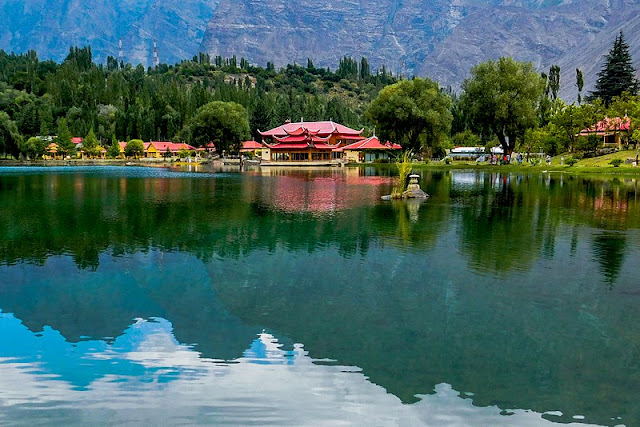Sadpara Skardu Baltistan سدپارہ سکردو بلتستان
Sadpara is a small village half an hour or 30 minutes away from Skardu and the people here live in small mud huts and live with love and affection and share each other's grief in their homes. Some are strong but sincere. In every small and big joy, they are happy with each other. In this village, there are many climbers, including Hassan Sadpara, who climbed Mount Everest without oxygen, and Muhammad Ali Sadpara, who climbed K2. What is it that they belong to this village
Shangrila Reaort Skardu baltistan
Kachora Skardu is located to the west of Skardu and if it is called Janat Nazeer Kachora, it will not be less because in Kachora you will find Paku Shangri-La, Upper Kachora Lake and Sikkim Thao meaning dry lake. Who doesn't know that in Shangri-La you will get to see very beautiful scenery and in Shangri-La you will also get to eat and see fresh trout majchali.
Shigar Fort Skardu Baltistan (شگر فورٹ سکردو بلتستان)
Shigar Fort Shigar is located in Skardu and this fort was built by the kings of earlier times and this fort is built on a big rock. In Balti language it is called Fong Khar which means a fort built on a big rock and this fort The walls are made of wood and stone and are built in a very strong style. Today, this fort is a tourist attraction and in this fort you can see old-fashioned ornaments, old-fashioned layers and old-fashioned war tools. Besides, a mosque has also been built inside the fort to offer prayers.
Modern history جدید تاریخ
In November 1839, Dogra Commander Zorawar Singh, who had pledged allegiance to Gulab Singh, launched his campaign against Baltistan. By 1840, he had conquered Skardu and captured its ruler, Ahmad Shah. Ahmad Shah was then forced to accompany Zorawar Singh on a raid in western Tibet. Meanwhile, Baghwan Singh was appointed as an administrator (police station) in Sikh Skardu. But in the following year, Ali Khan of Rondo, Haider Khan of Shigar and Daulat Ali Khan of Chaplo led a successful uprising against the Dogris in Baltistan and captured Baghran Singh, the Dogar commander in Skardu.
In 1842, Wasir Lakhpat, commander of Dogra, with the active help of Ali Sher Khan from El Kartako, conquered Baltistan for the second time. Fort Kharfocho was violently captured. Haider Khan, from Shigar, was a leader of the rebellion against the Dogris and died in captivity. Gossan was appointed administrator (police chief) of Baltistan and by 1860 the whole of Gilgit-Baltistan was under the control of the Sikhs and then the Dogris.
After the defeat of the Sikhs in the First Anglo-Sikh War, the region became part of the monarchical state of Jammu and Kashmir, which remained under the rule of the Dogris from 1846. The population in Gilgit considered itself ethnically different from the Kashmiris and was disliked by the rule of the state of Kashmir. The territory remained with the imperial state until November 1, 1947, with the temporary lease of some of the territories assigned to the British.
The Karakoram Highway connects Islamabad with Gilgit and Skardu, two important centers for mountaineering in Gilgit-Baltistan. The Northern Areas Transport Corporation (NETCO) offers bus and jeep transport to two hubs and several other popular destinations, lakes and glaciers in the area. Landslides are very common on the Karakoram Highway. The Karakoram Highway to Gilgit from Tashkent Town, Kashgar, China to Central China, the customs and precision inspection post on the Gilgit-Baltistan side, and the Khanjarab Pass, which crosses the world's highest smooth international border at 4,693 meters (15,397). Ft) connects to.
In March 2006, the concerned governments announced that on June 1, 2006, the three-week bus service from Gilgit to Kashgar would begin and work on widening the road on the Karakoram Highway (0,370 miles) would begin. There will be one daily bus in each direction between the two political parties' assistants and Tax Corgan border areas.











0 Comments